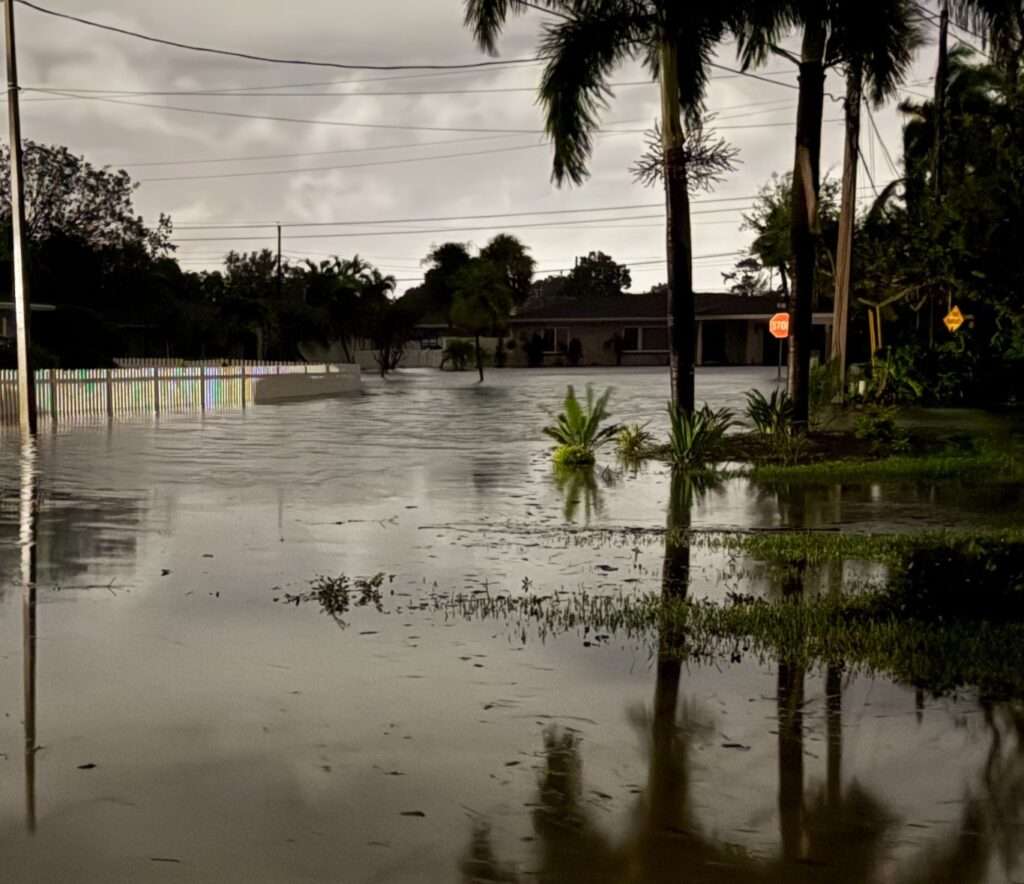
Post Flood.
Flooding remains the greatest threat to loss of human life during tropical events. Protect you and your loved ones by remaining outside impacted areas until it is cleared by local authorities. If you think barriers are necessary, you should evacuate. This page provides post flood information.
Post Flood
Before You Enter Your Flooded Home.
- Ensure your home is safe and cleared by local authorities (i.e. state, city, county, power company, fire department, police, other utility companies, and/or building inspector).
- Power lines on the ground, broken pipes, trees, and other utility lines. If unsafe, call the respective company or 911.
- Check your home for structural damage.
- Cracks, warped floors, sagging ceilings, tree/debris in roof/openings. Do not enter if there is significant damage.
- Smell for gas.
- If there is a gas odor, evacuate the house immediately and call 911 & gas company.
- Turn Electric/Power OFF.
- Do not touch wet electrical panels or devices, or if you are standing in water.
- Turn the main breaker off if it’s safe and dry. Call a licensed electrician or the power company if you need assistance or are unsure.
- Turn gas OFF.
- Turn off the main gas valve if there is safe access. Contact the gas company if you are unsure.
- Turn water OFF.
- Turn off the main water valve to prevent further flooding, contamination, and ensure all water lines are intact.
Post Hurricane Helene – Flood Damage
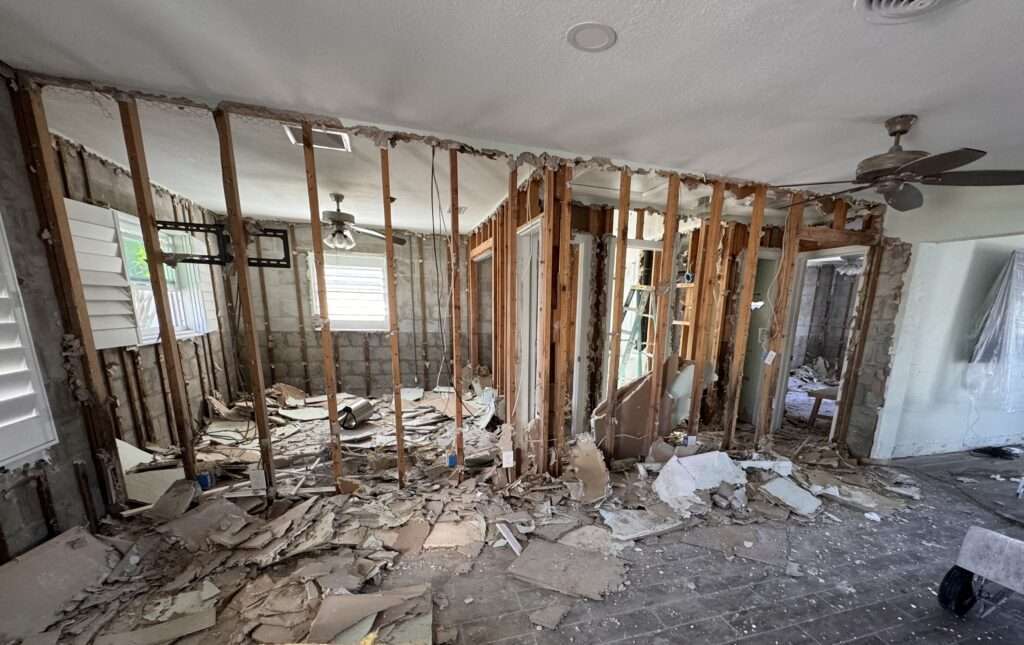
Entering your property.
- Wear protective equipment
- Boots, gloves, eye protection, and mask.
- Use a flashlight and avoid candles or open flames.
- Be careful for any animals or debris that may be in your home.
- Document, document, document! Take pictures and videos before you enter the home, as you enter the home, and before you begin the cleanup for insurance.
- Call your insurance company.
- Consider hiring a professional restoration company. A restoration company’s documentation is great for insurance claims. Pro tip: Call the night/day before to schedule an appointment.
- Insurance encourages mitigation of the property to minimize long-term damages. Mitigation typically does not require permits during disasters, however check local guidelines.
Starting the clean up
- Protect yourself during clean up!
- Remove standing water. Get as much water out as you can.
- Open windows and doors for ventilation.
- Use dehumidifiers and fans to help dry out rooms if you have access to safe electricity.
- If drywall needs to be removed then do this as quick as possible. It is ideal for drywall to be removed within the first several days to prevent mold from growing.
- Remove any porous items that cannot be cleaned or treated. Remember if you have black water (i.e. oil, grease, wastewater, etc.) then you will likely need to remove anything that soaked in the water.
- Check local guidelines for handling any type of cleanup.
- Restoration work typically involves moving all of your belongings out. Consider an Airbnb, friends house, short-term rental, or RV as housing solutions. Consider purchasing Rubbermaid considers to store your stuff in. Pack all your salvageable stuff.
- If you are overwhelmed, talk to family, friends, or call a professional. Help is only a call away. 988 Lifeline (Call or text 988) and the Disaster Distress Helpline (CALL or TEXT 1-800-985-5990 (press 2 for Spanish).
Post Hurricane Helene – Flood Damage
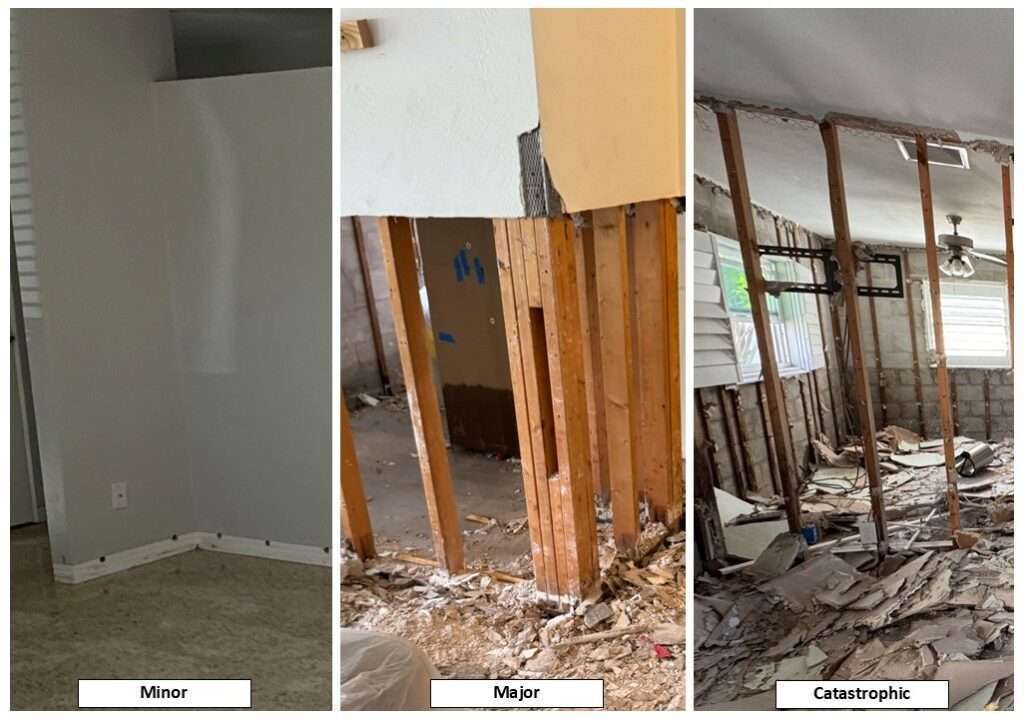
Post Hurricane Milton – Wind Damage
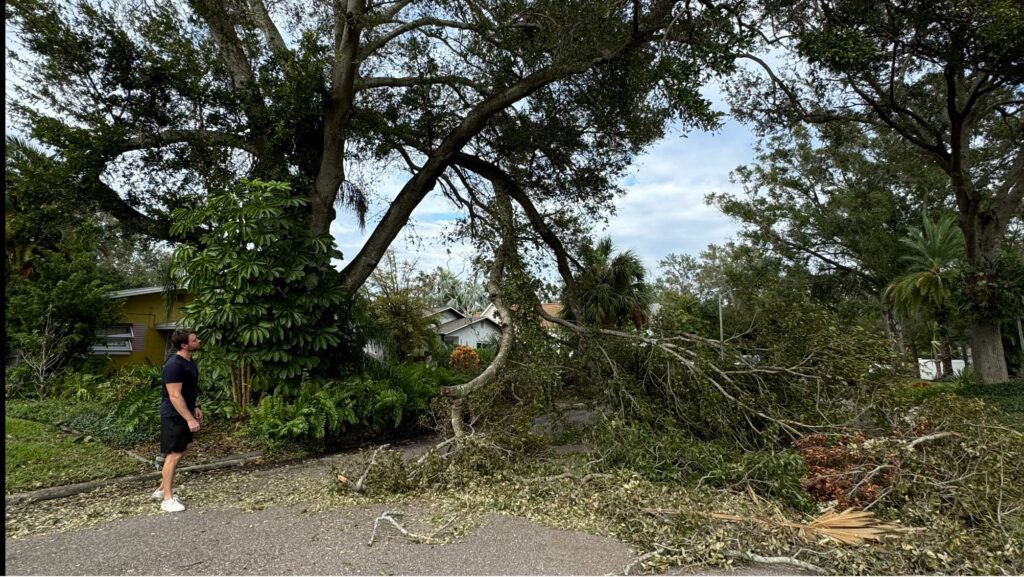
Insurance and FEMA
- Contact your flood insurance company.
- Address, policy number, date of loss, and the extent of damages (if known).
- Contact FEMA. FEMA will list disasters on their website and there will be an online application to have someone come to your property to evaluate it.
- Keep written logs of expenses, contractor conversations, insurance companies, receipts, etc.
- Save receipts for trash disposal, cleaning expenses, etc. and submit to insurance.
- Remove important items: Passports, drivers licenses, social security cards, flood insurance policy, homeowners insurance policy, cash money, clothes for several days, toiletry items.
Long-term
- The average time for homeowners to rebuild in Florida after Hurricane Helene was 7-12 months.
- The length of time it will take is based on the work required at your home, permits, and available contractors.
- If there was minimal water intrusion then you may be able to only drill holes in the baseboard and dry under the supervision of a professional mitigation company.
- If water in your home was deep enough to reach the bottom of baseboard then the baseboards and part of the drywall will likely need to be removed.
- If flood water reached your home’s electrical outlets then you will need to remove drywall and rewire those power sources.
- Drywall is typically cut from the floor in 1 foot, two feet, and 4 feet increments because drywall boards are purchased in 4 feet width sections (reinstallation consideration).
- Mold is serious and proper precautions should be taken.
- If the damage to your home exceeds ~49-50% of your home’s building value then you will be required to rebuild the home to FEMA flood standards for your area.
Post Hurricane Helene
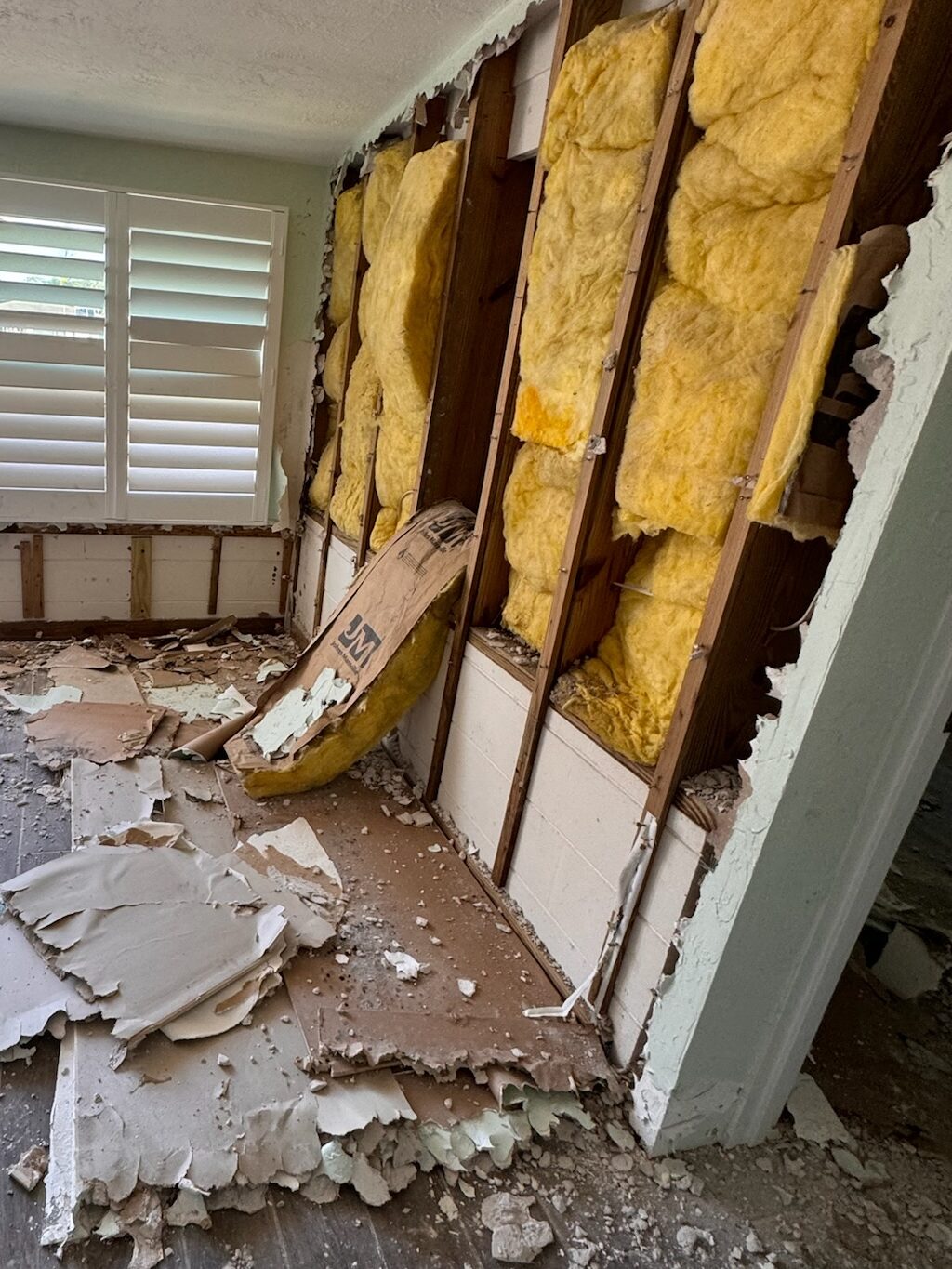
Post Hurricane Helene – Saltwater Appliance Fire
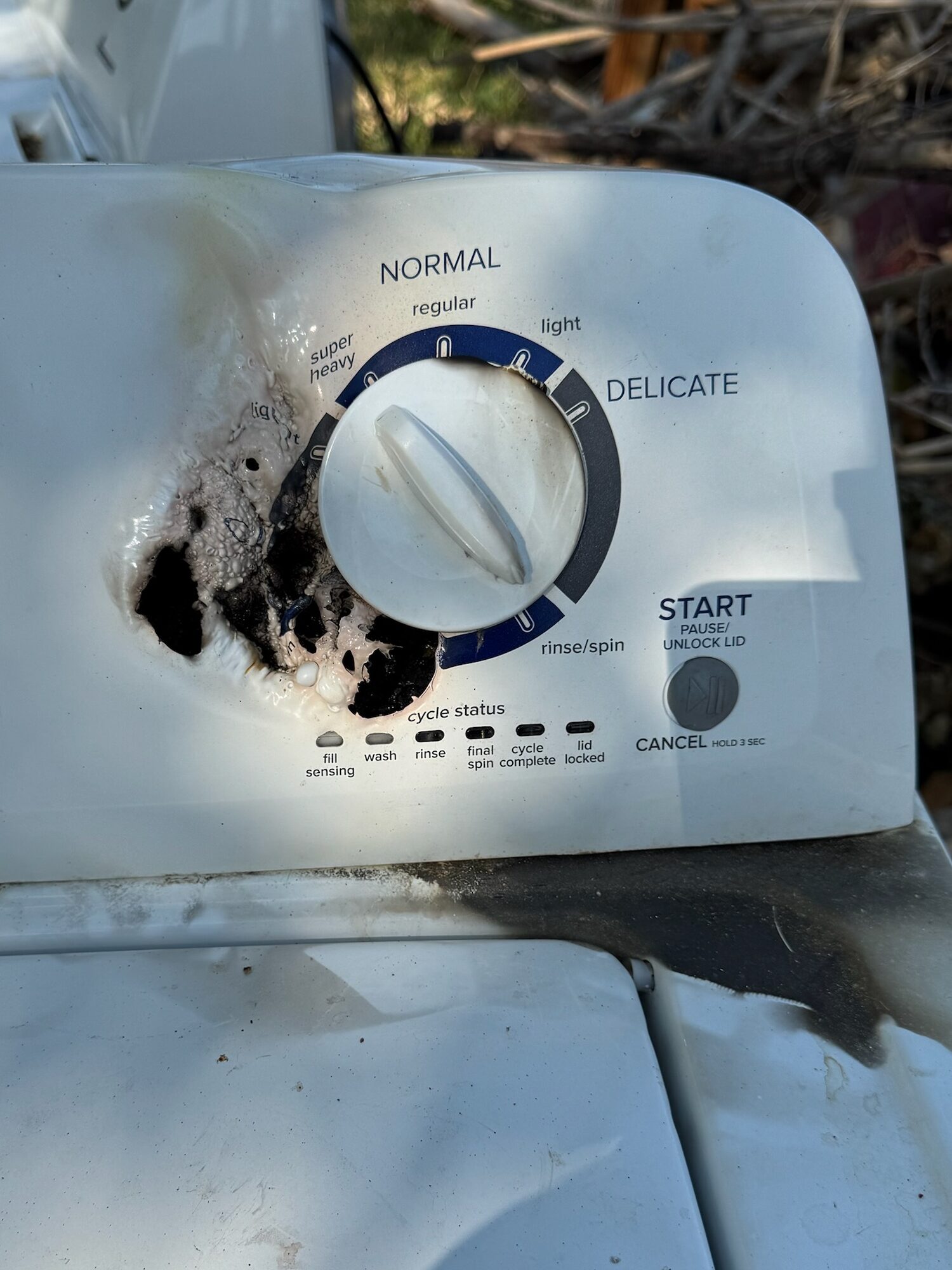
Long-term Continued
- If you cannot live in your home while restoration work is being completed (no water, AC/heat, bathroom, shower, etc.) then you will need to find somewhere else to live or potentially an RV.
- If you can live in your home, consider hooking up temporary utilities like a utility sink in your kitchen or bathroom. A dishwasher discharge line can be affixed to the utility sink.
- If your appliances were submerged in water then they should be replaced!! Saltwater fires are real!
- Flooring installation will require all items to be shuffled or removed from the floor temporarily (LPV flooring) or for several days (tile flooring).
- If a contractor leaves you without a shower, you may have to use a garden hose outside or a friend’s house if available.
- If you do not have a toilet, you will need to consider going to a friends, nearby store, gas station, or another acceptable location.
- Be kind to yourself. Do not be afraid to ask for help.
It is ultimately up to each person how to protect and mitigate their home. It is also up to the user how they proceed post flood/disaster. Please review the disclaimer on the main page.